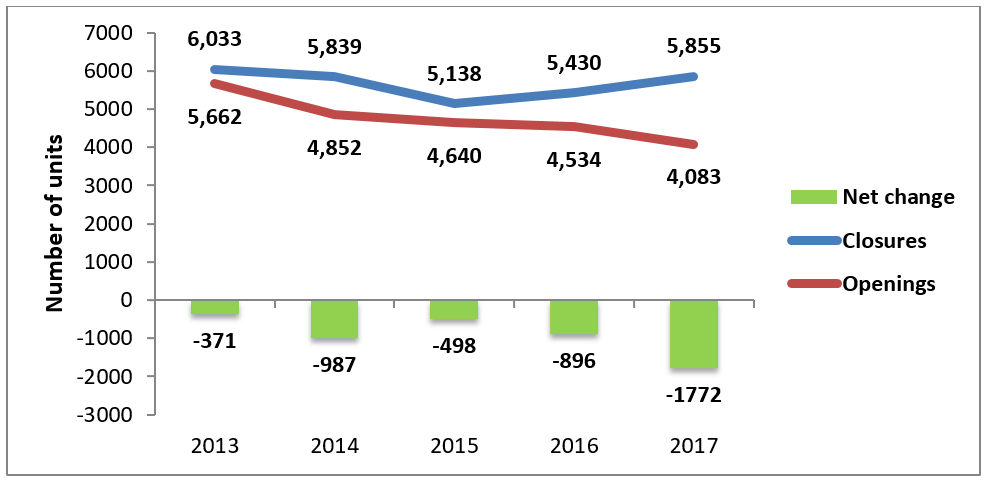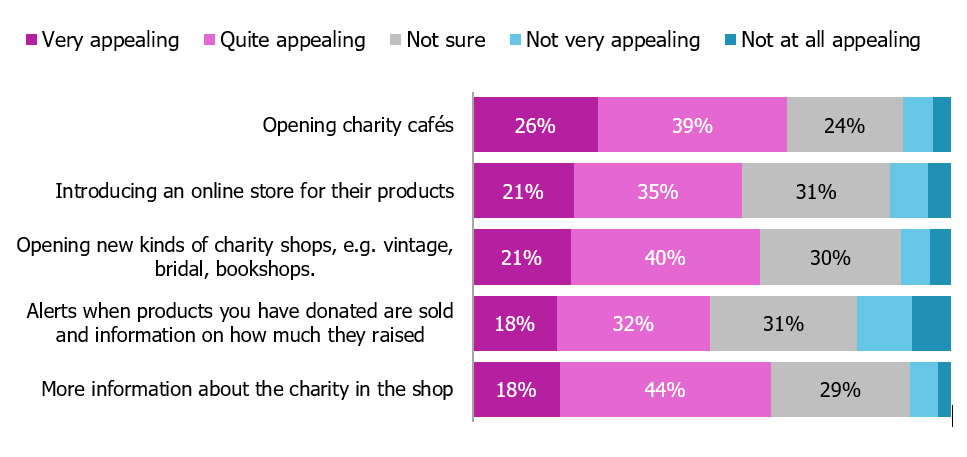Above the Cancer Research shop had been a visible part of fundraising in the town for decades.
Also on top of the high streets decline charity shops have to deal with high rents, insurance, utilities, and thefts from customers which are very high, and yes people do steal from charities!
On top of this Ebay has caused a lot of damage as people trawl around charity shops buying things to resell on eBay and make a profit, in return Charity shops are aware of this and have upped their prices to reflect this, and why not, but high prices put people off and genuine buyers who are not dealers will buy off Ebay directly, so getting a true vintage item or high-quality clothing at a low price is rare!
So there are many reasons that charity shops are now slowly in decline not just in Colwyn Bay, Llandudno and Rhyl but all over the UK.
It is very sad that in times of high costs that charity shops should be the place to go to buy cheap clothes and bric a brac, yet it does seem that they are falling out of fashion in a world that claims re-using and recycling are the way forward, but fails to put these sentiments to practice.
Charity shops re=use, recycle and fundraise, what can be a better option to any person who is environmentally conscious or on a budget? Yet they are still in decline!
Charity shops are in decline. 271 closed in 2017- a net loss of 69- according to a study by PwC. And yet, evidence suggests that they remain popular with the public. nfpSynergy’s Charity Awareness Monitor found that over three-quarters of respondents agreed that charity shops were a good place to find a bargain (77%), while 60% agreed that they sell good quality items.
Can this anomaly be explained? And how can it be addressed?
High street shops decline affects the charity sector
Context is important, and it is possible that charity shops are simply collateral damage in the ongoing war against online shopping. According to PwC, the number of stores opening in 2017 fell to 4,083 from 4,534 in 2016, with an average of 16 closing every day (up from 15 last year). This equates to a net loss of 1,772 stores. The Children's Society, which runs 104 charity shops, has suffered a dramatic decline in customers over the past few years, according to Lynne McMahon, director of retail and trading. 'The number of customers fell by about 50 per cent. We can't run a shop at a loss.' This branch closed, after 20 years, at the end of March. 'We're not a destination shop — we're very reliant on footfall, on people walking past. Small things — like a bus stop moving or a bank closing — can make a tremendous difference.'
Opening and closures of multiple retailer units, 2013-2017 (Source: Local Data Company)
But can a difficult year for the retail industry explain this decline? Indeed, it could be argued that charity shops should thrive in a tough trading environment.
For example, in recent years many charity shops have successfully converted from selling second-hand bric-a-brac to offering designer labels at discount prices, allowing fashion-conscious consumers to update their wardrobes cheaply and ethically. Openings of ‘boutique’ charity stores receive regular coverage, serving to further embed the idea that charity shops give value for money- and as our research indicated, this still resonates with the public.
Unfortunately, this isn’t sufficient to maintain footfall in a cut-throat retail environment. Despite being recognized for quality, a full 50% of the public nevertheless link charity shops with high street decline according to a report by Demos. Only 6% of those who rarely visit charity shops think a healthy high street should contain more charity shops, a figure that rises to 32% for regular shoppers. Interestingly, younger people are much less likely to associate charity shops with high street decline than older people (42 percent of 18–24-year-olds compared with 72 per cent of those over 65s).
With this in mind, what else can be done?
Thanks for Giving is apparently to close shortly!
The public demands innovation
Charity shops must broaden their appeal beyond relying on the products they currently stock – only 6% of respondents to our CAM said they visited a charity shop to find out more about a charity, with 53% going to buy used clothes/items, and a further 69% donating products.
Our research shows that innovation is welcomed in charity shops. Respondents were asked how appealing they would find a range of different innovations that charity shop chains could introduce – all were received well, with between 50% and 75% finding them very or quite appealing. Particularly relevantly, 62% found the idea of more information about the charity in the shop appealing – supporting the statement above.

“Thinking about different innovations that charity shops could bring in, how appealing would you find each of the following” Source: Charity Awareness Monitor, Oct 17, nfpSynergy | Base: 1,000 adults 16+, Britain
All of this suggests that if charity shops must innovate to stay alive, there is significant room to do so, and may potentially bring the opportunity to attract untapped audiences.
Many charities are already exploring this uncharted territory creatively, and with great effect.
Late last year, UK charity Help Refugees opened the world’s first pop-up shop where you can buy tangible gifts directly for refugees. Everything on sale was themed around three phases of a refugee’s experience – Arrival, Shelter and the Future – providing customers with the opportunity to learn about the refugee crisis. The “Choose Love” store received widespread coverage, even BBC Three (the BBC’s digital platform aimed at 16-34 year olds) ran a feel-good feature piece.
The Hosbis Dewi Sant closed ofter decades of fundraising in the town
Similarly, when three faith-based London charity shops (Christian, Buddhist and Jewish) collaborated with Islamic Relief to open a multi-faith store in Selfridges, the opening received exposure in the Guardian and Vice (another digital news platform directed at young adults).
Charities clearly could be doing more to engage more people (particularly younger audiences) in different ways. Consumers increasingly want transparency, demand convenience and expect engagement in their retail experience.
For example, Cancer Research UK recently formed a partnership with taxi firm Uber, enabling people to use the company’s cabs to donate items to charity’s shops free of charge for a limited period. Of course, such initiatives will not be possible for every charity. But despite the challenging retail environment, it shows that opportunities do exist for charity shops to appeal more widely and deeply than ever before.
With an existing reputation for quality products, charity shops are in a great position to capitalize on the concerns of the public for a range of causes and issues. By building a sense of collective participation, important to younger audiences and demonstrated by any number of recent social movements, charity shops can offer the opportunity for tangible contribution beyond twitter hashtags.
Above St Kentigens at Old Colwyn is soon to close
Above the RSPCA in Old Colwyn Closed after over 25 years of trading
In part from...https://nfpsynergy.net/blog/study-second-hand



.jpg)
Its so sad to see this happening, they are great recycling places and the heart of the community
ReplyDeleteHigh rents and utilities, shoplifters, I think they will all go eventually, and it will be ebay or car boots!
ReplyDelete